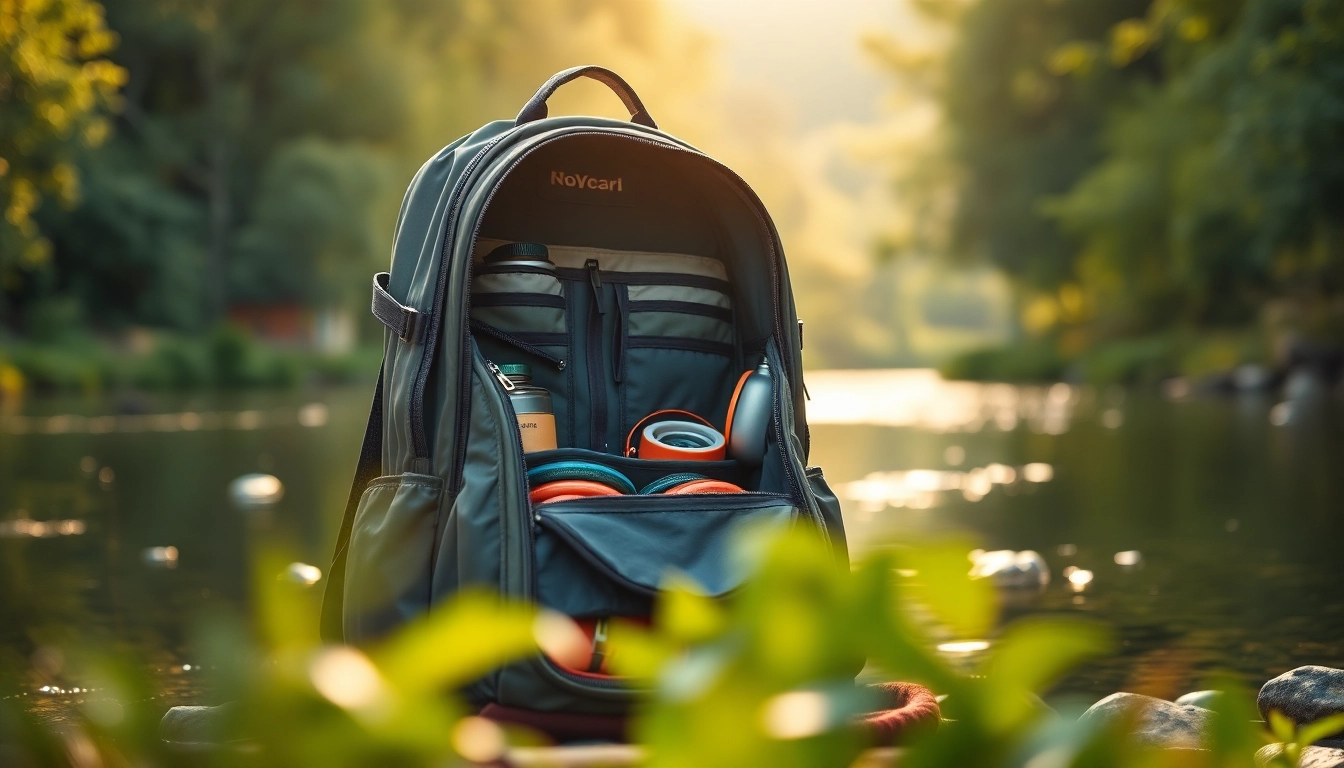Top Features and Benefits of a Fly Fishing Backpack for Every Angler
Understanding the Importance of a Fly Fishing Backpack
When embarking on an adventurous day of fly fishing, the significance of a well-equipped Fly fishing backpack cannot be overstated. This specialized backpack offers anglers the ability to efficiently manage their gear while maintaining comfort during long hours spent at their favorite fishing spots. It serves as a vital piece of equipment that not only enhances organization but also elevates the overall fishing experience.
Why Choose a Fly Fishing Backpack?
A fly fishing backpack differs from regular backpacks in its design and functionality. Its purpose-built features, such as waterproof materials, multiple compartments, and ergonomic support, cater specifically to anglers needing to transport fishing gear, tackle, and personal items comfortably and securely. By choosing a fly fishing backpack, anglers can easily access their essentials, adapt to various fishing environments, and enhance their efficiency on the water.
Key Features to Look For
- Waterproof Materials: Look for backpacks made from high-quality waterproof fabrics to keep your gear dry.
- Multiple Compartments: Adequate storage options allow for easy organization of various tackle items and personal belongings.
- Ergonomic Design: A well-fitted, comfortable backpack can prevent back strain during long hours of fishing.
- Attachment Points: Features such as rod holders and loop attachments for tools enhance functionality.
- Adjustable Straps: Straps should be adjustable to ensure a snug fit, allowing for comfortable wear throughout the day.
Comfort and Ergonomics in Design
Long hours spent fishing can lead to discomfort if not supported properly. Many fly fishing backpacks emphasize ergonomic design, which includes padded shoulder straps, lumbar support panels, and adjustable fits to align with the angler’s frame. These features not only prevent fatigue but allow for ease of movement, ensuring you can focus on casting rather than adjusting your gear.
Types of Fly Fishing Backpacks
The market for fly fishing backpacks is diverse, catering to different needs and fishing styles. Understanding the distinctions between types can help you choose the right backpack for your adventures.
Day Packs vs. Multi-Day Packs
Day packs are designed for short trips, usually accommodating enough gear for a few hours on the water. They often feature a more compact design and lightweight materials for easy portability. On the other hand, multi-day packs are larger, providing capacity for several days of fishing equipment, food, and camping gear. These packs are ideal for anglers venturing into remote areas for extended periods, equipped with added comfort features to handle the extra weight.
Specialized Features of Hybrid Backpacks
Hybrid backpacks combine elements of traditional backpacks with specialized functionality for fishing. These packs often include features such as built-in fishing vests, flotation capabilities, or modular designs that adapt for various activities. Hybrid options cater to anglers who value versatility, allowing them to switch between walking, wading, or even hiking without needing to change their primary gear storage.
Comparing Chest Packs and Sling Packs
While traditional backpacks excel in capacity, chest packs and sling packs offer unique benefits for anglers requiring quick access to gear. Chest packs strap across the chest, keeping essential tools like tippets and flies close at hand. On the contrary, sling packs sit comfortably on one shoulder and can be rotated to the front for easy access. Each style has its advantages; choosing between them largely depends on personal preference and fishing style.
How to Properly Organize Your Fly Fishing Backpack
Effective organization inside your fly fishing backpack is key to a successful outing. Knowing what to pack and how to arrange your gear can minimize time spent searching for essentials and increase your fishing efficiency.
Essential Gear to Include
Deciding what to pack can influence your overall experience on the water. Essential items typically include:
- Fly boxes
- Tackle and terminal tackle
- Leaders and tippets
- Tools (forceps, nippers, etc.)
- First Aid kit
- Snacks and hydration
Identifying your fishing conditions will further help determine what additional items are necessary, such as sun protection, rain gear, or extra layers.
Best Practices for Layout and Accessibility
For optimal organization, consider using a combination of zippered pouches and compartmentalized storage. Place items you use most frequently, such as fly boxes and tools, in easily accessible locations, while less used items can be stored deeper in the pack. Rearranging items based on anticipated usage can enhance your efficiency while fishing.
Maintaining Balance and Stability
To maintain balance during movement, heavier items should be packed closer to your back and higher up in the pack. This positioning allows for even weight distribution, reducing strain on your body as you move. As you navigate through diverse terrains, regularly adjusting your backpack’s load and ensuring the straps are secured can further enhance balance.
Care and Maintenance of Your Fly Fishing Backpack
Maintaining your fly fishing backpack is essential for ensuring its longevity and performance. Taking proactive steps can prevent wear and tear, keeping your gear safe and functional for years to come.
Cleaning Your Backpack Efficiently
After an outing, clean your backpack to remove dirt, salt, or substances that might contribute to wear over time. Rinse it with fresh water and mild soap, paying special attention to any areas of abrasion or grime. Allow it to air dry in a shaded area to prevent fading or damage to the fabric.
Storing Your Pack Properly
When not in use, store your backpack in a cool, dry place away from direct sunlight. Avoid folding the pack excessively, which can compromise its structure and waterproofing features. Ensuring that the pack is clean and dry before storage will also prevent mold or mildew from developing.
Repair Tips for Longevity
Minor repairs can be easily managed to extend the life of your backpack. For small tears, use waterproof tape or a needle and thread to reinforce the area. Familiarizing yourself with the manufacturer’s warranty and repair services can also be beneficial for major damages. Regular checks for wear points will help mitigate larger issues before they arise.
Maximizing Your Fishing Experience with the Right Backpack
The right Fly fishing backpack not only enhances your gear management but also contributes significantly to your overall fishing experience. By tailoring your pack to your needs, you can explore waters with confidence and focus on what matters most: the thrill of the catch.
Real-Life User Experiences
Collector insights indicate that those utilizing well-organized, purpose-built fishing backpacks report heightened satisfaction during their trips. User experiences reveal that with everything within reach and organized effectively, anglers can enjoy the tranquility of nature while remaining prepared for various conditions.
Itemization for Various Fishing Environments
It is essential to tailor your packing list based on fishing environments, whether freshwater lakes, rivers, or coastal regions. Each setting requires specific gear, and customizing your fly fishing backpack with the appropriate items ensures you’re prepared for any situation you may encounter.
Tips for Choosing the Best Backpack for Your Needs
When selecting a fly fishing backpack, consider your fishing style, duration of trips, and specific needs, such as storage volume and access points. Taking the time to match these traits to the right pack can significantly enhance your fishing outings, allowing for greater enjoyment and fewer interruptions.












Post Comment